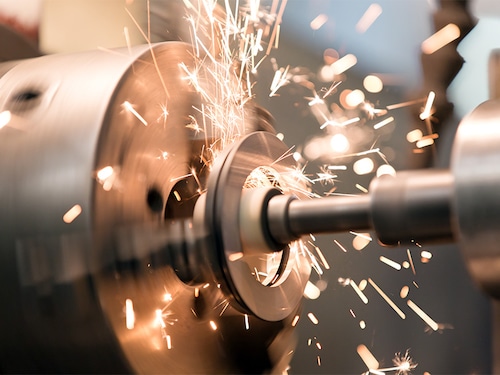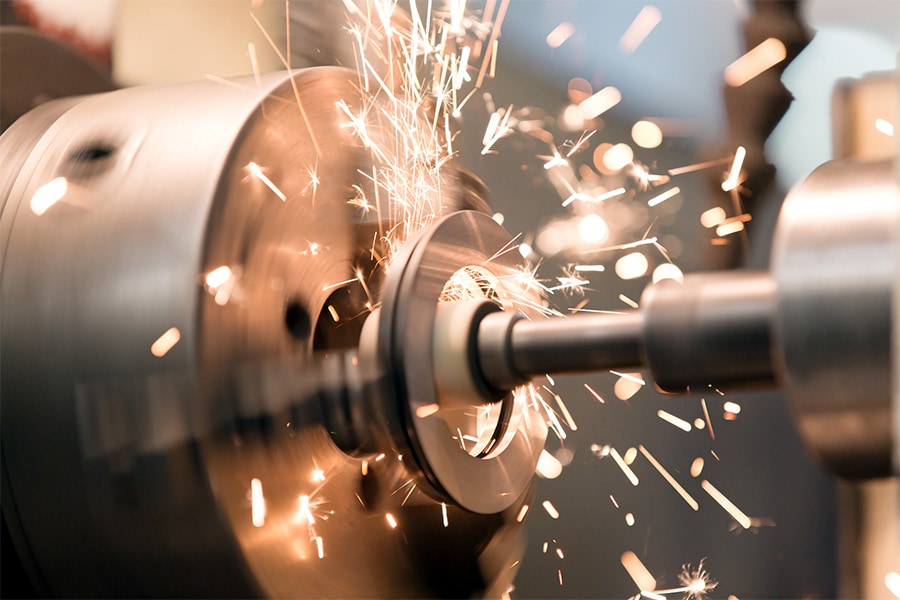Inside the world of innovation in manufacturing
It's easy to come up with path-breaking ideas, what's difficult is to line up forces behind them to turn them into innovations.



Image: Shutterstock
Today, innovation can be seen in every walk of life, especially manufacturing. In my experience, innovations in manufacturing can be classified as: process, product, management and suppliers/supply chain. One of the earliest innovations that I saw in manufacturing was the invention of a new process to produce sponge iron in a rotary kiln. This was later converted to an industrial scale innovation, in the avatar of Ipitata Sponge Iron Limited, now called Tata Sponge Iron Limited.This process, albeit several modifications and upgrades, is still in operation today, having produced several million tonnes of high-grade sponge iron for the country, besides hundreds of crores in profits for the company.
The rebuilding of the Pamban railway bridge, by project manager extraordinaire Sri E. Sreedharan, is another instance of an innovation, which was completed in a record time-46 days-and met the needs of millions of people. While the rotary kiln was a technology/process innovation, the reconstruction of the Pamban Bridge was a project management innovation where unique techniques were used to speed up work.
Modern times have seen the emergence of the Apple iPhone as a series of innovations in new products, new technologies, new value creation and new supply chain processes. Many millions have benefited from the Androids and the iPhones of the world. The demonetisation exercise brought about overnight by the (Prime Minister Narendra) Modi government set a new benchmark for introducing and managing “mega" changes in a large democracy. The Goods and Services Tax (GST) is following a similar pattern albeit not that suddenly.
Invention or Innovation?
It’s important to distinguish between inventions and innovations. Invention is a subset of innovation. The power of innovation lies in new value creation on a commercial scale. When an invention is exploited successfully commercially, it becomes an innovation. Consider the electric bulb, great invention, but producing them in bulk, and serving millions of customers is what made it an innovation. Innovation can be defined as something that adds value to what you are already doing, in a unique, unprecedented way which has the potential to add value to the community/ stakeholders. Take for example the case of Tata Consultancy Services (TCS) that completed the 77 days project of bringing water to the hilltop at Tirupati, or when Hindustan Unilever Ltd (HUL) innovated the Pureit water filter, or Akshaya Patra which innovated the poor feeding scheme, or the Lijjat Papad and the Amul milk endeavours which revolutionised certain segments of the society.
An innovating strategy
An innovation strategy is important to encourage, promote and make innovations possible in a systematic way. For example, it’s very important to have an innovation strategy for large governmental programs which seek to bring about massive change: for Make in India, for Skill India, MNREGA and so on for corporates who want to stay relevant to their markets R&D programs for their very survival and educational institutions which seek to influence thought and actions of its stakeholders they all need a strategy.
The creation of a culture of innovation helps the cause of serial innovation. To successfully create and commercialise inventions, companies must commit themselves to the process of innovation. There are many such processes available. The three box solution by Dr Govindarajan, the 5 E process being proposed by the SPJIMR innovation movement (Enable, Experiment, Execute, Empower mavericks, Extend), the TGIF (Tata Group Innovations Forum) process for promoting corporate innovations, and, including innovations as a part of the continuous improvement process, is what the current models of business excellence like the Malcolm Baldrige or the EFQM would exemplify.
Creating the right atmosphere
Creating an atmosphere for innovation is very important. An ambience that allows creativity is what makes innovations happen. Innovations can take place under different circumstances but the process cannot be boxed into compartments. However, it can be facilitated. Funding, recognition and rewards, channelising energies through engagement and goal/ target setting all works. For example, in the good old days, 3M had the practice of including a target for sales revenue from “new products”, of, say, 25% in its score cards. These new products were then created through a process of innovation which the company had installed in its operations.
Are some people more adept at innovation than others?
Innovation involves skill, thinking, knowledge, the ability to toil despite temporary setbacks, a never-say-die spirit and a dogged but intelligent perseverance quality. Only this combination can lead to serious innovation.
The Design
The first outside manifestation of an innovation is the design, which can be a sketch or a drawing or a well laid out business plan. It is like the egg that a hen hatches. From this springs the life of the innovation. Just like the hen has to prevent the eagle from taking away its newly-hatched eggs, the innovator must preserve the designs and then work on commercialising the output. Without the commercial part, the innovation is like the egg but its been consumed for breakfast by the eagle. Without a design, an innovation remains in the mind of the innovator. It is design which gives the innovation a currency to manifest itself to being of use to society.
From design to commercialisation: Value delivery through an innovation
The design is but the first step in making an innovation happen. Engineering makes production on a large scale possible, allowing it to become transferable to many locations, letting the finished product reach the masses.
Engineering and production are the most important means to deliver on the promise. In fact, ‘productioneering’ is the key – which is engineering, backed up by a production facility design which can manufacture a product at a low cost that would help meet the value proposition. Take the example of Dell Direct. The promise was to deliver a laptop in four days, anywhere in the world. If successful, this had the potential to revolutionise many concepts in the manufacturing and delivery of a laptop. This involved a flexible manufacturing line, a quality-oriented production process, a supporting IT infrastructure, a speed-oriented delivery system, and a nimble supply chain. That Dell succeeded to deliver on its promise has been recorded in business literature. Then, take the case of the new car models introduced in India – The Duster and Kwid by Renault is an example of speedy ramp up of production to meet higher-than-expected levels of demand though engineering of assembly lines or the CIaz and Ertiga by Maruti – an example of engineering and product features that meet the customer needs) the Ace by Tata Motors - a classic case of design success, supported by the highest standards of engineering and ‘productioneering’. The Tata Ace was the first product in its class, followed very successfully by the Mahindra Maxximo. Then take the Mahindra XUV, a shining example of product innovation using design concepts, backed up by engineering the assembly line for mass production to introduce a new class of passenger vehicles to the Indian market. The creation of the bank accounts of several million marginal Indian families in a record time under the Jan Dhan Yojana is another example.
While there are many such examples in Indian industry, it must be said that the jugaad culture of innovation prevalent in the country has inhibited the growth and application of engineering and technology to innovative ideas. Examples of jugaad in India are dime a dozen. Take the case of the roadside mechanic. He uses the open space available on the side of a road, starts his business in a small area, which grows over time. The tools that he uses are primitive by modern standards of the automobile industry. Still, he will do as good a job on the Maruti Ciaz as any major well-equipped service station of Maruti, which would be equipped with up-to-date equipment. Such is the case with many nursing homes, hospitals, offices, where people find a way to manage with what is available, improvising, using jugaad all the time. What this does is to enable the chalta hai (it happens) attitude to carry on ad infinitum till a major crisis develops. This is an area which needs to be addressed on priority.
One way to do it-and this has been the norm for many years-is to get into collaborations, joint ventures, partnerships, and so on, to commercially exploit innovations that Indian inventors may come up with. The other way is for eminent Indian engineers to return to India from abroad, especially those in the US, Canada, Germany, or for them to come into some working arrangements with government or private companies (if their employment contracts abroad allow for it) to create engineering and technology elements that can make an invention become an innovation.
A key missing piece, why the inventions do not make the grade as innovations, is the ambience. Converting ideas into innovations is a weak area because of cultural and other hamstrings. In the ancient Indian fables of Panchatantra, Indian businessmen were often portrayed as traders of cloth or jewellery, buying and selling, but not so much as manufacturers. When in fact, in the Mahabharata and Ramayana scriptures, the characters are equipped with warfare that resembles current day war equipment. The Ramayana has a description of the pushpaka vimana in which Rama and Sita flew to Ayodhya. But yet, history is devoid of how these modern-ish weapons came about, who designed them, where did they get them? Or who built them. While great strides were also made in astronomy by our ancient scientists, who knew that the Earth rotated around the sun, there is no recorded history of whether there were factories in ancient India to mass produce goods and services. Thus, ancient, and to an extent, even modern India, lacks the “culture” of industrialisation. Even Britain and America took about 200 years to master mass production methods.
In spite of these handicaps, India business has prospered and become a force to reckon with. Practices like Total Quality Management, business excellence, benchmarking, working with foreign companies under technical or management collaborations have all enabled the Indian industry to build on its inventive manpower. In fact, a key enabler of innovation is the participation of people in the movement. Without people, ideas are absent, and there is nothing to build on. While at the company level the corporate sector can play a leading role within its boundaries, competition will force companies to erect walls and barriers through IPR to protect and safeguard innovations, so that the originators of the innovations can get the maximum benefits. That is capitalism.
However, in a developing country like India, there is an important role for the legislative and the executive branches to perform. The government should act as a facilitator, provide facilities to an extent, but, perhaps, most importantly, remove obstacles (vigna hartha) such as, bureaucracy, documentation, unnecessary approvals, tracking and reporting to excess. This is what is meant by ‘creating conditions to ease business conduct’, or creating the ambience. While no one disagrees that there should be rules and regulations, it is good to simplify and streamline. Many times, it makes sense to do away with certain rules completely, so that the innovators are empowered and find the ambience favourable.
By R.Jayaraman, Professor, Operations at SPJIMR (SP Jain Institute of Management and Research), Mumbai
First Published: Jul 28, 2017, 05:55
Subscribe Now